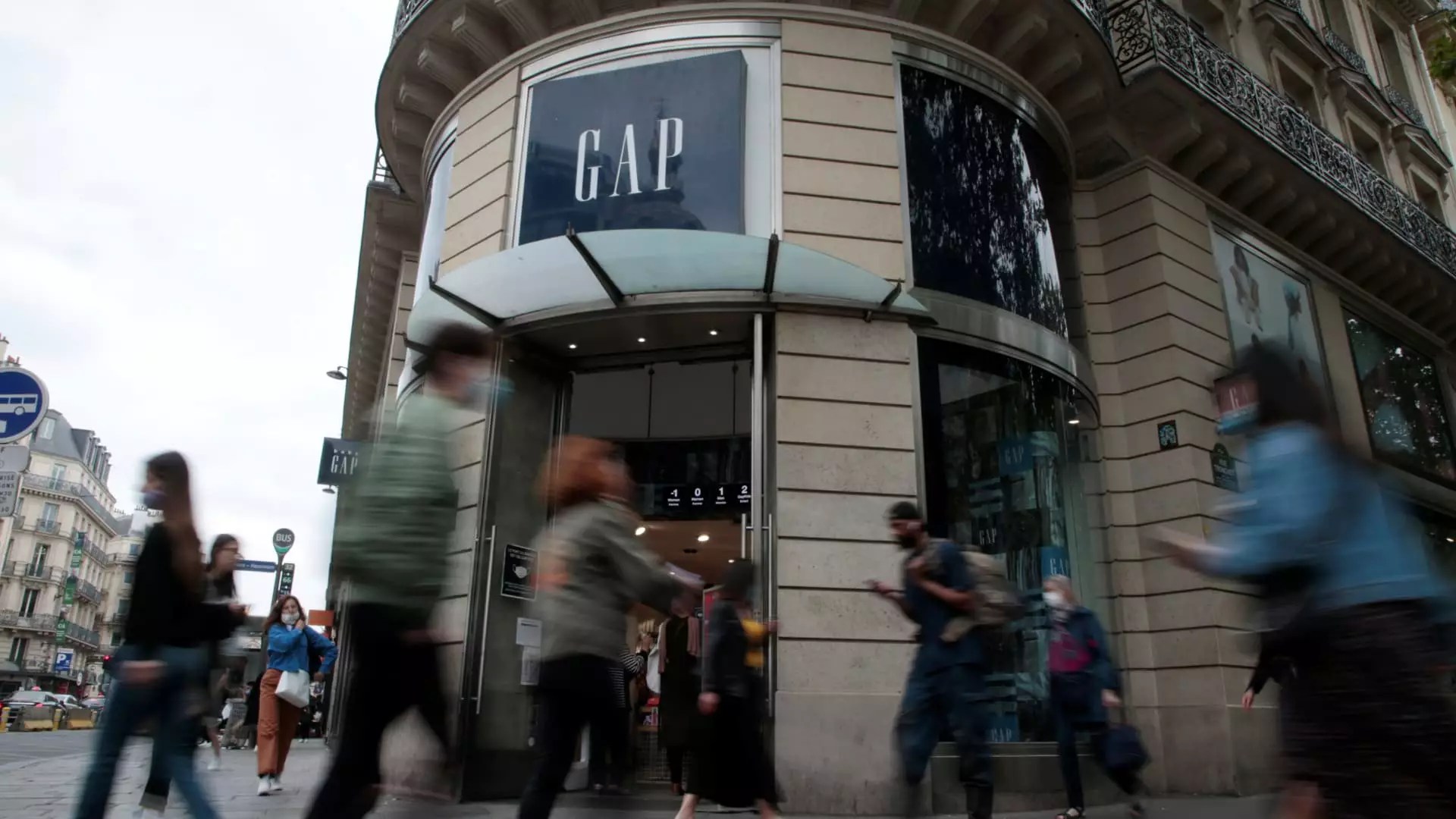Recently, Gap Inc. revealed the significant financial impact that proposed tariffs could impose on its operations. The company’s estimates suggest that if the new 30% levy on Chinese imports and a 10% tax on goods from most other countries remain in effect, Gap could lose anywhere from $250 million to $300 million. While the CEO Richard Dickson downplayed any immediate consequences for consumers, claiming that strong brands can adapt and thrive, it’s clear that the financial strain from these tariffs cannot be dismissed outright. With a knee-jerk reaction from the market, Gap’s stock is under pressure, raising questions about whether the company can maintain its position amidst these challenges.
The momentous cost of these tariffs highlights a deeper issue: the realities of supply chain vulnerabilities. In a globalized economy, dependency on any single country, especially one that’s prone to rapid policy changes like China, poses a formidable risk. Therefore, Gap’s revelation that they plan to mitigate these tariffs through diversification speaks to a broader trend in the retail sector. Companies can no longer afford to rely solely on one geographic area for their sourcing.
Assessing Gap’s Quarter Results
Despite these ominous forecasts, Gap’s fiscal first-quarter results were surprisingly robust. The company reported earnings per share of 51 cents, beating analysts’ expectations by a noticeable margin. Revenue also exceeded predictions, reaching $3.46 billion—a rise of around 2% from the previous year. While it would be easy to celebrate these numbers as evidence of corporate resilience, one must scrutinize their implications. Are these results merely a reflection of a temporary stability amidst a chaotic landscape, or do they signify a systematic transformation the company is undergoing to survive in an increasingly hostile marketplace?
Moreover, the predictions for the upcoming quarters seem rather tepid. With expectations of flat sales growth ahead, it’s evident that retailers like Gap are fighting against more than just tariffs; they face a shifting consumer landscape continually influenced by economic pressures. Gap’s pivot toward focusing on key markets, such as Vietnam and Indonesia, reveals an attempt to sail through turbulent waters, yet this strategy may not provide the quick fix they hope for; competition is fierce, and cost structures in these regions can also buckle under pressure.
The Role of the Economy and Trade Policy
The growing tension surrounding U.S.-China trade relations has broader implications that reach far beyond Gap’s balance sheets. Here we see a clash of ideologies: the nationalistic tendencies that fuel tariff policies juxtaposed against the principles of free trade that have historically nurtured global commerce. In the light of the ongoing trade war instigated during the Trump administration, consumer-facing companies like Gap disclose vulnerabilities that extend to their very foundation. The question arises—are these tariff policies ultimately conducive to economic growth, or are they merely a façade for deeper, systemic vulnerabilities within our supply chains?
Concerns about rising costs inevitably lead to questions about the American consumer’s capacity to bear these burdens. A central tenet of center-right liberalism is the ultimate consumer empowerment that comes from free-market principles. However, rising costs could force brands into a dilemma where passing on expenses becomes unavoidable, leading to a gap between consumer expectations and corporate limitations. Will we soon face a scenario where retail giants, supported by influential lobbying efforts, shift these costs entirely onto the middle class, leading to the very disenfranchisement free-market principles intended to prevent?
The Brand Strategies in Flux
Interestingly, Gap’s strategy unveiling highlights the varying performances of its different brands, which serve as an insightful microcosm of the overall retail landscape. Old Navy, being the shining star, provides hope; sales growth indicates that consumers are still willing to spend on value-driven offerings. Meanwhile, Gap itself shows potential for recovery, yet Banana Republic and Athleta reveal a deeper malaise, with their substantial declines offering a sobering reminder that the retail world is not simply a game of one-upmanship but rather a broader battle of relevance amid changing consumer preferences.
Consumers today are searching for authenticity and sustainability; they want brands that resonate with their values. Those that fail to adapt to these evolving expectations may find themselves at a precipice, supporting the idea that the brand’s image and connection to the consumer are just as vital as well-calculated supply chains. Gap’s management might need to reassess not just their sourcing strategies but also their brand narratives.
In light of these complexities, it is crucial to recognize that however resilient Gap may seem on paper, pressing structural issues loom large, and the question will always remain—can the legacy retailer maneuver through these murky waters effectively, or will it, too, be swallowed by the currents of change?


Leave a Reply